Conscientious Objection in North America (10)
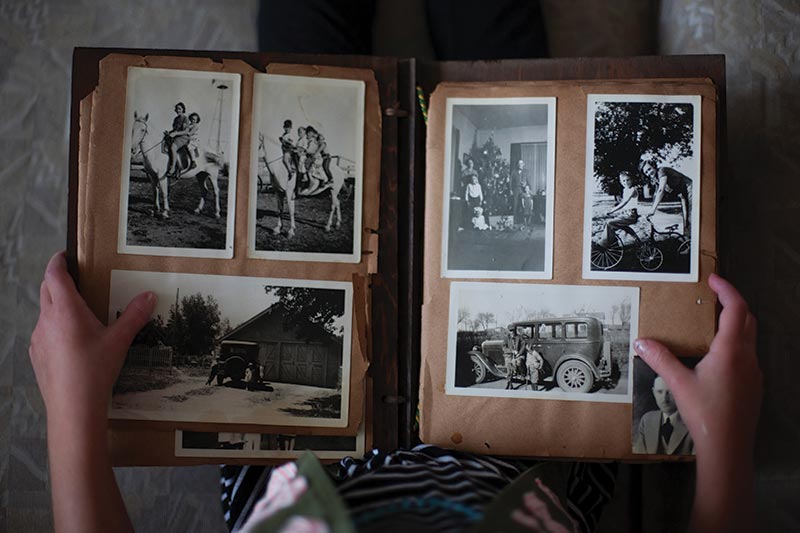
In part 10 Bro. Peter talks about the time during WW2 in Canada.
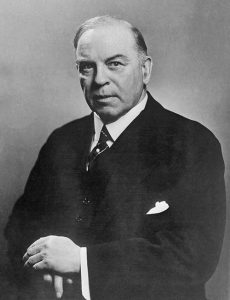
Conscription in Canada1Most of this first section is derived from “Broken Promises: A History of Conscription in Canada” by Granatsein and Histman
During WW2, the Canadian government attempted to exercise total control over the nation’s military and civilian human resources. This was largely ineffective, and disrupted the lives of almost all the population. Conscription for the armed forces was only a part. In addition, those who objected to military service in any form were segregated and banished to perform “Civilian Public Service” in remote rustic camps. This consisted of either manual labor in the National Parks, or construction work in remote areas, often ultimately meaningless. How this came to pass is the subject of this article: its outworking in reality is also discussed.
Canada never actually enacted conscription for overseas service during WW2, but this did not prevent major disruption of the civilian populace. The lessons of WW1, with the violent opposition by Quebec to conscription, and the losses suffered in France were not forgotten. The Prime Minister, Mackenzie King, had opposed conscription in WW1, and he declared at the outset of war on September 8, 1939, that no-one would be conscripted for overseas service. All conscripted into the army were to serve in Canada.
Two days later, Canada was at war. There was no shortage of volunteers for the newly created Canadian Active Service Force (CASF), for the country was plagued by unemployment. Subsequently, there was much political turmoil over the conscription issue, but the current Liberal government saw an opening and called a snap election on March 26, 1940. The result was a resounding success for King’s “limited liability” war effort.
The situation changed dramatically when the Germans overran the Anglo-France front in May, 1940 and the National Government under Winston Churchill was formed on May 26th. There was a real fear that Canada would become a prize of war, so steps were taken for the defense of the country by a “National Resources Mobilization Act (NRMA)”, dated June 20, 1940, but this still was not for service outside of Canada. The act had very broad powers, and caused much disruption.
All single men and women over 16 were to register during the period August 19-21, 1940. Only those married before July 15 were to be considered married, so there was an unusual number of July weddings, in order obtain exemption from conscription.
The scope of conscription, although still confined to service in defense of Canada, was gradually widened, and by July 1942 the officers of National Selective Service (NSS) made sure that, with few exceptions, no one, male or female, could take employment anywhere without a permit. By the beginning of 1943, the country was almost totally mobilized: and those in the army, by virtue of the NMRA, were serving anywhere in the Northern part of the Western Hemisphere, including Jamaica, Bermuda, and the United States. By the end of 1943, out of a population of 8.8 million over the age of 14, just over 5 million were in the army or otherwise employed.
Finally, on 23 November 1944, Mackenzie King agreed that some of the NRMA force could be sent to fight overseas, and so about 13,000 were transported. About 2,500 saw action in Europe, with 69 killed. This was only after a brief period of internal revolt, with perhaps half of those told they were to go overseas being absent without leave (AWOL) at one stage.
Alternative Service2Mostly from “Alternative Service in Canada During WW2” JA Toews 1959. See also “Alternative service for Peace,” ed. A.J. Klassen (1998)
Provision was made in the NRMA act for conscientious exemptions from service and for deferments. Also, an Alternative Service program was established, as discussed below, but not until the summer of 1941. Until then, service under the NRMA was postponed for Conscientious Objectors. In May of 1941 Government plans for Alternative Service finally found concrete expression in an arrangement with the Federal Department of Mines and Resources. Camps were to be established in National Parks where Mennonites and other Conscientious Objectors could be sent for their labor service.
For a little more than a year the administration of Alternative Service Camps was under the Department of National War Services, which handled the matter through the Department of Mines and Resources. No important policy changes took place until the fall of 1942, when the administration of the National War Services Regulations was transferred to the Department of Labour.
The first camp was established at Montreal River in Ontario, 625 miles NW of Toronto and 63 miles from Sault St. Marie, in a remote former lumber camp. The vast majority of the camps were in even more remote areas of British Columbia on Vancouver Island.
Involvement of Christadelphians
…during WW2, there were four fellowships among the approximately 2,000 Christadelphians in Canada.The report issued by the Christadelphians, “A Summary Report of the work of the Canadian Christadephian standing committee 1920-1945” is useful in many aspects, but it is somewhat limited as the minutes of the committee for the period 1939 and conscription were lost. In this, it shares the fate of the records of the similar committee in the United States.
As we mentioned in part 8, by the 1930s there were three main groups of Christadelphians in North America: Central, Advocate and Bereans. In addition, around 1942 the Berean Fellowship split in its turn and the small Dawn Fellowship arose. So, during WW2 there were four fellowships among the approximately 2,000 Christadelphians in Canada. News concerning the brethren during the war can therefore be found in all four magazines: The Christadelphian, The Berean, The Advocate and The Dawn Ecclesial Supplement.
A joint Central-Advocate committee was formed in Canada in 1934, after the accession of Hitler in Germany, and this committee prepared for conscription during 1938 and 1939. A petition asking for exemption was prepared and signed by all ecclesias represented by the joint committee.
As in WW2, the Advocate and Central Fellowships presented a united front to the Canadian government, but the Bereans, and later Dawn, declined to be part of a joint committee, and the “Summary Report” complained about the negative effect some of their interaction had with the government.
During the war
Unlike in the United States, few records exist of the treatment and experiences of Conscientious Objectors in Canada. No systematic records exist of the names of those who served, nor of the details of the camps. Although we are told 72 Christadelphians performed Alternative Service3See Toews, Op. Cit., I can find records of only 60, and these are scattered over multiple sources. So, I had to rely largely on the magazines and recollections of the relatives of those who served, and I am grateful for all the information they have given me over the past year or so.
Summary
WW2 led to immense disruption in the lives of the young Christadelphians. This lasted for many years, as physical examinations for military service took place in October 1940 and it was not until 1946 that alternative service came to an end. At least 72 Christadelphians are reported as serving some time in Alternative Service which, out of the approximately 2,000 total membership, was quite high. The service involved hard physical labor, in areas usually thousands of miles away from home ecclesias. The pay, at $0.50 per day, ($7CAD, $5US today) was a pittance, especially as a number were married, as well as having to supply their own clothing. Even those considered to be essential had their wages mostly captured, apart from $25 per month, plus allowances,4These allowances and payments changed frequently during the war: see Towns, op. cit. However, this diversion for the Red Cross did cause much continuing displeasure among Christadelphians and given to the Red Cross. Unlike in the USA, there does not seem to have been an organized support network, although individual families and ecclesias often stepped in,
At least no-one died directly as a result of their experiences, as far as I can tell, although several were injured. One member, Donald Crone, was imprisoned for refusing to go to camp, and one member, AB Eddie, became converted during the war while serving in the Royal Navy, and served 40 days in prison before being released. One brother, William Smith, unfortunately committed suicide rather than undertake life in alternative service. However by the spring of 1943, with the demand for workers, mainly on farms, most were permitted to leave camp and get a small increase in pay.
A few have told their stories, and many indirect records remain from such things as Camp Newsletters and more recent histories. However, unlike in the United States, there has not been a collective effort to preserve information, and so even for the 60 or so whose names we have, for most their doings are almost unrecorded. We do know, however, something about several camps where many Christadelphians were present, so we do have at least a good idea of the way of life in camp.
Initially in July 1941, many were in the Montreal River camp. There they labored building the trans-Canada highway, mainly with picks and shovels, although it was largely make-work. Later, they were mostly transferred either to Banff, Alberta, or to Vancouver Island, to one of the many camps established in this beautiful, but isolated, area of western Canada. Again, many were at one camp in particular, known as Shawnigan Lake, about 30 miles north of Victoria, BC, which city fortunately had ecclesias of all three main groups. And of course, Vancouver was a ferry ride away, so visits on Sundays were usually possible. Frankly, although many feared the disruption, most seemed to have quite enjoyed their time in camp, despite the hardships of isolation, hard work, and restricted free time. The one consistent complaint was about the low pay, and later the fact that any earnings over a bare minimum were turned over to the Red Cross!
Montreal River, Ontario
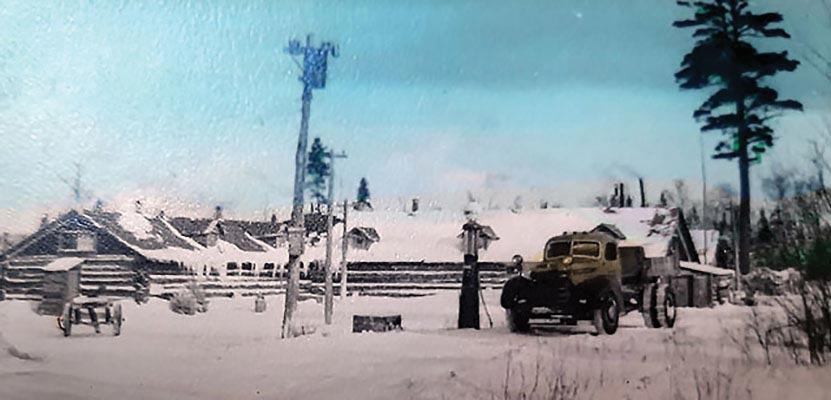
When it was set up in July 1941 as the first camp in Ontario, the COs were sent there for a supposedly 4-month period, to coincide with the then basic military training time. This was extended “for the duration” when the 4 months expired. The camp was very isolated: the nearest town (and Post Office) was 80 miles away, and visiting in winter was almost impossible.
Donald Crone was sent there from 640 miles away late in December, 1941. He was a member of the Pefferlaw ecclesia, about 60 miles north of Toronto, which by coincidence was founded by Bro. Howard Toole, converted while imprisoned as a CO in WW1. Don is described in the Camp Newsletter, “The Northern Beacon”, as fully engaging into the life of the camp. He played the role of Father Christmas, was known as “Grandpa Crone” because of his prowess in darning, and was prominent in several other ways. After undergoing an appendix operation, he was granted farm leave. However, when summoned to return to camp, he refused, was arrested, and spent four months in prison before being returned to camp. He was the only one mentioned in my records as being imprisoned, this being as a result of his ecclesia having joined the Dawn fellowship, and then insisting on absolute exemption. This unusual attitude caused his ecclesia to then stand aside from the Dawn fellowship for several years. Donald returned to farming around 1944 after some time in Shawnigan Lake (see below), but sadly was killed in an industrial accident in 1956.
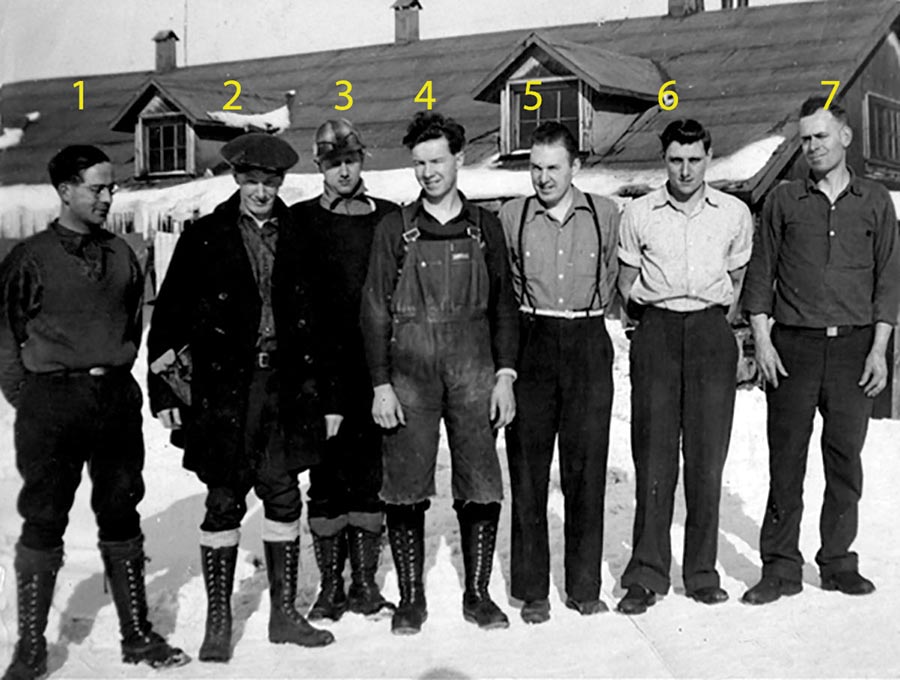
Life in camp was a somewhat primitive and very isolated experience, but the food was good (most put on weight), the scenery spectacular, and the work, although very manual, was helped by reasonable foremen. In general, life in camp was quite happy for most, although all suffered from the isolation. Bro. Frank Vinall, from Hamilton, was a frequent visitor, weather permitting. Al, his son, was publisher of the Camp newsletter. Bro Joseph McKnight’s story of life in camp is told in the “Summary Report”. We know that at least 14 Christadelphians were there at one time or another: 7 are shown above.
Banff, Alberta
In another area of great natural beauty, replete with mountains, glaciers, and lakes, the brethren there basically helped maintain and improve the national parks in the area. I covered the situation of Ted and Margaret Farrar, who were there, in “Sisters at War”, The Tidings, Dec 2019.
Edward Cotterell’s story is also told in the “Summary Report” mentioned above. There were nine Christadelphians present in camp in November 1943 when Edward arrived, and they shared one tent with three Plymouth Brethren. With Sunday free, this location was only four miles from the town of Banff, so a trip there after Sunday memorial meeting was common.
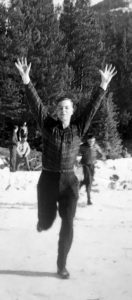
The work was varied, strenuous but healthy; including climbing mountains to mark diseased trees, and general carpentry. Food, again, was generous and healthy, and Edward had few complaints about the year he spent in camp. Initially unbaptized, after a few months in camp he requested baptism, which took place in the local hot springs, with the air temperature of -10 deg F and water at 115 degrees. Edward was discharged on Sept 21, 1943.
Arnold Robinson was another brother at Banff, arriving a little later, in 1944. He, along with most COs, wrote many letters to his relatives, and his most interesting letters have survived5I thank Sis. Nancy Brinkerhoff, a granddaughter, for sharing them. With Coleman lamps for illumination, an outside privy (with temperatures down to -30 degrees F), life was arduous, There seemed to be only three Christadelphians in camp with him; Arnold was the only Berean. It was interesting that when he wrote to the Editor of The Berean, he was advised against breaking bread with any non-Berean. The other groups had no such qualms, and it is clear a little later that the three Christadelphians in the same camp, Arnold, Bill Roberts, and Charles Casson were meeting together. His letters describe interesting religious debates he had with the Jehovah’s Witnesses and Mennonites in Camp. Arnold bemoaned his lack of Bible knowledge, and appealed for pamphlets to help in the discussions about the doctrines of the devil and the soul, but clearly made little impact on his audience. It is not certain when he was released, but in November 1944 he was in Brantford per intelligence in The Berean.
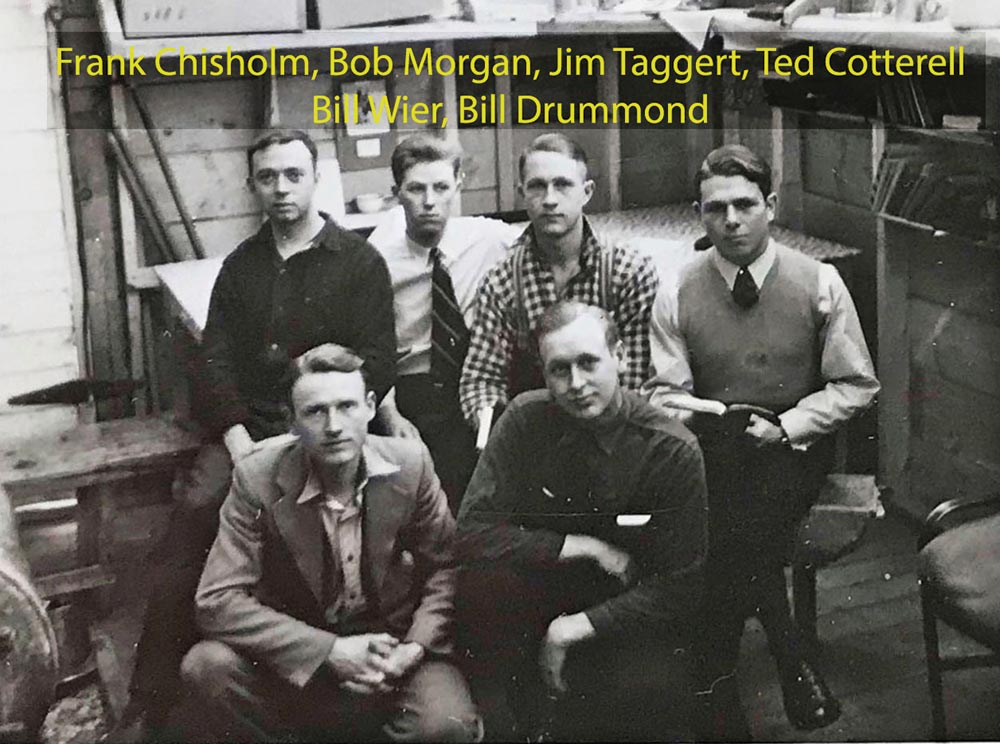
Shawnigan Lake, BC
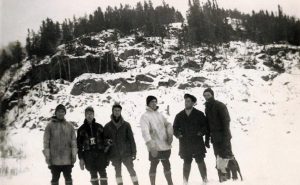
Many Christadelphians were in this camp. It was one of about 17 camps on the island, established partially because of fears of incendiary attacks by the Japanese. In these camps, fire watching and suppression, forestry work and building roads were the main work done from May, 1942 onward, and these efforts, unlike in other camps, were very valuable. The BC forestry service was most disappointed when the camps were closed in March, 1944; this was the time most of the occupants went on to work on farms back in Ontario.
I dealt with the marriage of Harold and Betty Ashley in this camp in the Dec, 2019 issue of The Tidings.
Albert Stunden is featured in many of the pictures taken at Shawnigan lake (also known as Kokislah Camp, C3)6See https://archives.mhsc.ca/koksilah-alternative-service-work-camp-shawnigan-lake-british-columbia. I will summarize here details of life in camp, partially derived from other Christadelphians who were there, Bob Templeton, Harold Perks, and Harold Ashley. Many of these men had already spent time at Montreal River or elsewhere, by the time the camps on Victoria Island opened. Accommodation was in small prefabricated wooden huts, and there was hot and cold water in a separate shower hut. With hard manual labor, food was important, but also reportedly quite ample, if a little monotonous.
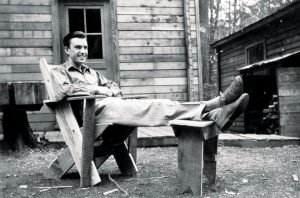
Of course, the ecclesias at Victoria were accessible for meeting when leaving camp on a Sunday was permitted. There appeared to be at least four ecclesias for the various fellowships in the city. Albert seems to have quite enjoyed his time at camp. On one occasion he hiked to the Pacific Ocean with three other intrepid campers, about 40 miles to the East, this was quite a distance in a weekend.
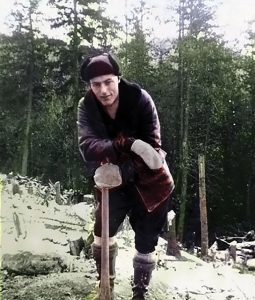
Bob Templeton7This information is from Sis. Betty Styles was transferred to Shawnigan Lake sometime in 1943 after two years at Montreal River. His job was to fell “snags”, or dead trees, and also clear the way for road building. One Sunday a month they could leave for meeting in Victoria, and the Christadelphians from that city often came up for visits on the other Sundays. Bob became a cook which was a significant position. He reports:
Peter Hemingray
(Pittsburgh, PA)